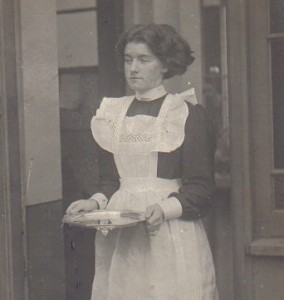While searching the Roman Catholic parish register for Kilmormoy in counties Sligo and Mayo (NLI Pos. 4231), I came across the following regulation, copied into the first page of the marraige register. This regulation, decided by the bishops of Killala and Achonry gives us some insight into Irish marriage customs from the early 19th century.
Registry of Marriages for Kilmormoy
“The following regulation regarding the marriage of servant maids who leave their native parish and domiciliale elsewhere was agreed to by Right Revd. Doctor Peter Waldron Bishop of Killala, and Right Revd. Doctor Patrick McNicholas Bishop of Achonry and notified on __ day of ___ 1823.
It is copied from the autograph of Doctor McNicholas
A servant maid continuing to reside in her master’s house or Parish, after the expiration of her service or who has obtained a release from her engagement, with a view to her being married, is at liberty to marry either in the house of her parents, or in the Parish of her actual residence. In the former case the marriage fee belongs to the parish priest of her paternal residence; in the latter to the parish priest of the place of her residence or service. The priest to whom she applies first for marriage will be the person entitled to the emoluments. Should her parents be dead or should she have no fixed residence the house of her brother, sister, uncle or aunt where she was in the habit of residing is to be considered her domicilius juris and she may choose as above.”
Irish marraige customs usually dictate that the marriage took place in the parish of the bride, but this regulation allows the marriage to take place in the parish in which the bride was residing, not necessarily the parish in which she was born. The regulation also clarifies which parish was to receive the marriage fee, presumably a very important consideration for the church.
You can consult microfilm copies of the Roman Catholic parish registers for Ireland at the National Library of Ireland. Although many of these records are available online at www.rootsireland.ie there is no substitute for viewing the original, where you may stumble across notes and regulations that will inform and enhance your research.
